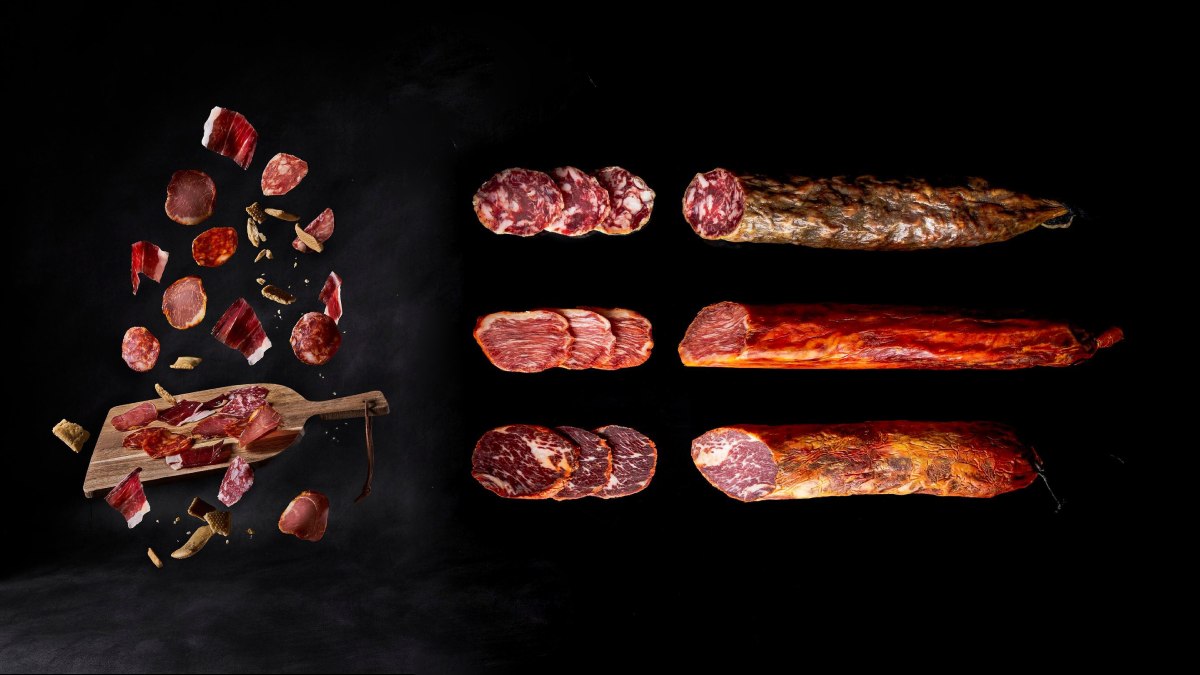Click here to read the Spanish version.
Although by its taste you surely know how to distinguish an Iberian product from the one that is not, many times they try to trick us by falsifying some data or aspects to offer food of worse quality in order to reduce costs. As we want you to know how to identify truly Iberian products, these requirements that the Community of Madrid has compiled in the section of its website dedicated to Health and Food, will be of great help.
To begin with, for a product to be considered Iberian, it must be regulated by legislation, based on factors such as handling, feeding or the % of breed to which the pigs belong. In total, there are four types of products that can fall into the category of Iberian: Iberian ham, Iberian shoulder, loin, cured loin or Iberian loin and, finally, pieces of fresh meat -solomillo, chuleta…- Iberian.
One of the main aspects to be taken into account in order to identify these Iberian products is the labeling, both the seal and the vitolas, as well as the accompanying labels. It is essential to pay attention to the color of the label because it determines the denomination of sale, in the case of hams and shoulders; or the type of product itself, in the section on sliced products.
If the black colored seal, then it is a 100% Iberian breed pigs, fed with acorns. On the other hand, the red seal refers to pigs raised on acorns, but not purebred Iberian pigs. If the green seal refers to pigs raised in the pasture or field and fed with grass and feed. Finally, the white seal is for pigs raised in a feedlot and fed only on feed.
Other key aspects of labeling
There are two parts to the labeling of Iberian products: mandatory and optional. The mandatory information that must be reflected on the food label is the following:
- Feed name (including product name + type of feed + management + breed percentage)
- List of ingredients (including allergens)
- Net quantity
- Best-before or best-before date
- Storage conditions
- Name or company name and address of the responsible company
- Nutritional information
- Lot
- Health mark
With respect to optional labeling, the term “pata negra” may be used exclusively for products with the sales denomination “de bellota 100% ibérico”. The term “dehesa” or “montanera” may be used exclusively for products with the sales denomination “de bellota”.
Certificates guaranteeing quality
One of the things that characterizes Iberian products is their excellent quality. To achieve this, they must be certified by independent bodies that guarantee their origin and quality, after monitoring from the birth of the animals, control of their feeding and handling until the commercialization of their products. This is also reflected in the labeling, accompanied by the expression “Certified by”.
Iberian hams and shoulders are identified at the slaughterhouse with tamper-proof seals that will accompany them throughout their commercial life. This includes a unique number with which the Iberian product can be traced back to the farm where it was born and raised. They also carry the logo of ASICI (the Interprofessional Association of the Iberian Pig) or, in this case, that of the Regulatory Council, if the product is under a Protected Geographical Denomination or Indication (for example: Guijuelo, Jabugo, etc.).
What are the most common frauds?
Even with all the requirements that these Iberian products need, there are tricks that make it difficult to identify which ones are really Iberian. The most common are the use of seals with a color that does not correspond to such food; or include logos that are neither ASICI nor the Regulatory Council.
Other brands even use names, logos or images that may evoke Iberian products or elements, such as acorns or pastures. Finally, the use of incomplete sales denominations or including different terms is also common.
After reading all these tips, would you be able to identify authentic Iberian products?

